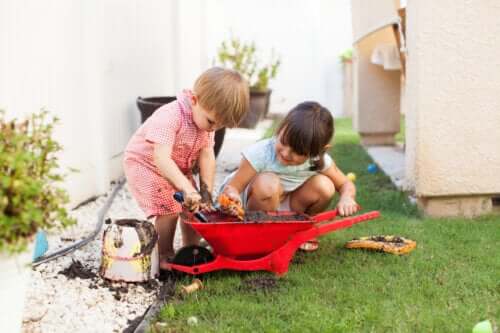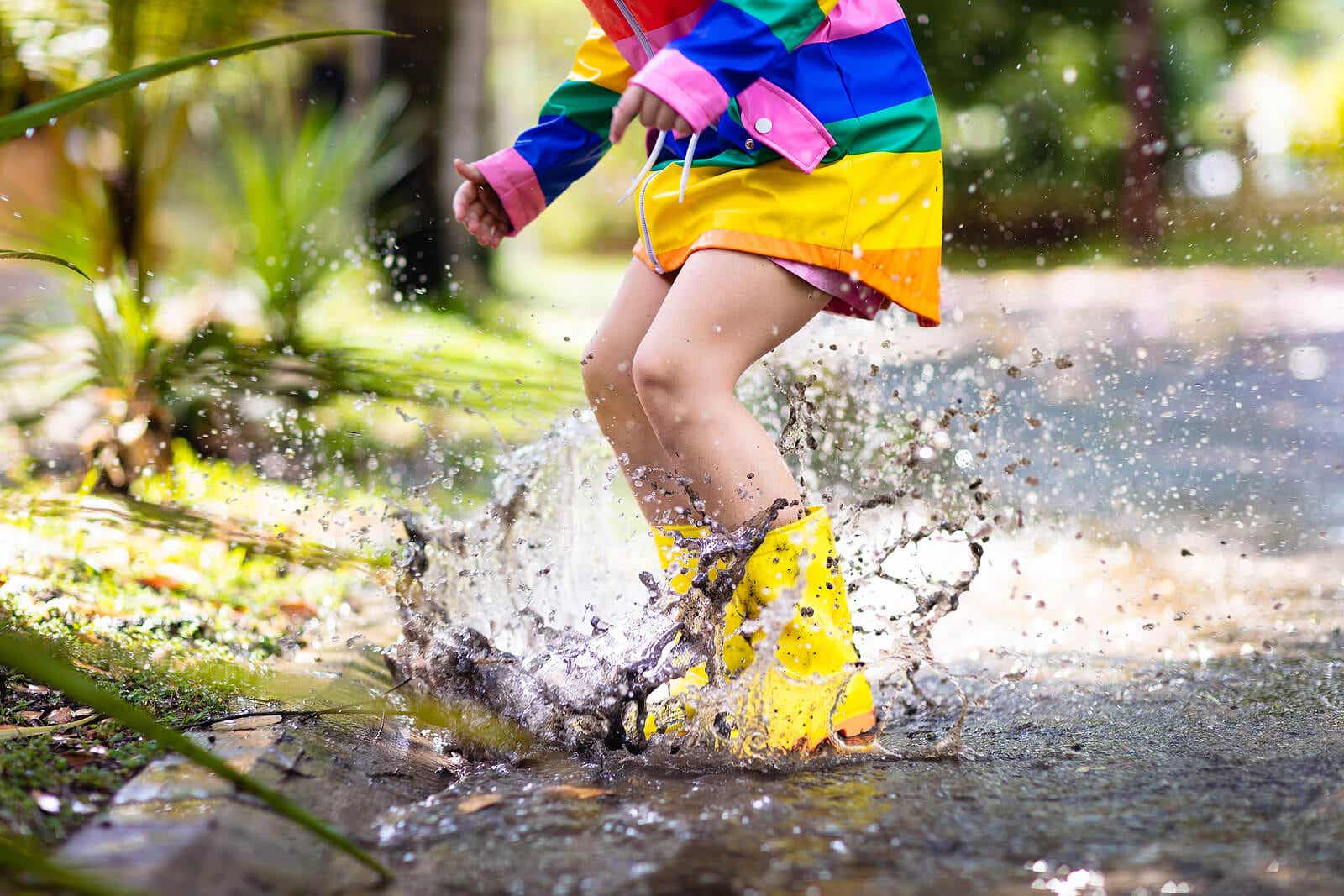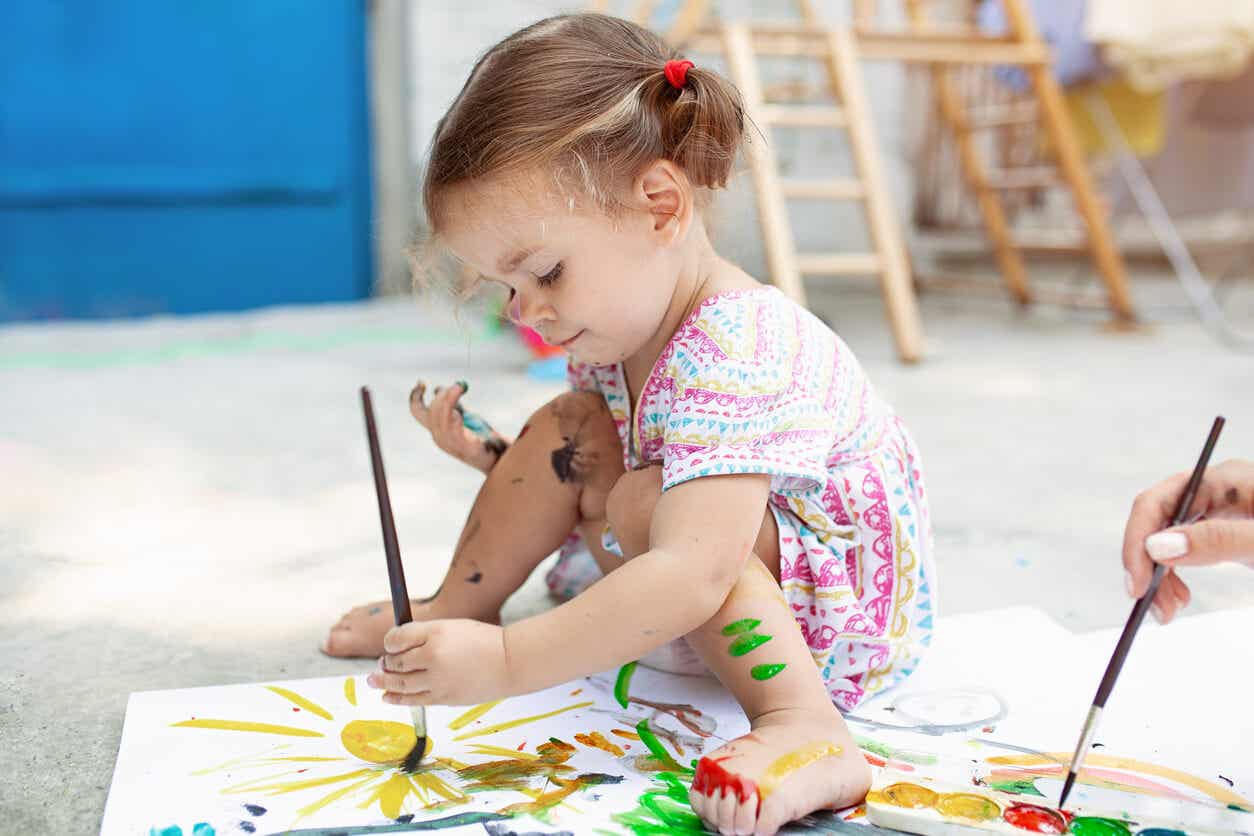How Getting Dirty While Playing Affects Child Development

Many parents ask (some even demand) that their children, when they’re picked up after school, have their hair perfectly combed and their clothes clean. So, should we prevent children from getting dirty when playing? Not at all! sadly, in many cases, parents and caregivers are more concerned with little ones not getting dirty, and less concerned about them actually enjoying themselves.
It often seems as if parents are always telling their children, “Don’t sit on the floor!” “Be careful, you’ll get your clothes dirty!” Or, “You’re a mess!” In fact, it’s so common that we’ve become accustomed to it and even do it ourselves.
However, is it really a good thing to prevent children from getting dirty all the time, and being careful not to get their clothes dirty? Sure, moms and dads do it for the benefit of the child, but is it really necessary? Let’s see below.
Getting dirty when playing

While hygiene is always important, so is carefree enjoyment. Remember, during the childhood development stage, playing is one of the ways a child learns.
Children at play include various elements, and exploration stands out among them. As it’s popularly said: “To make an omelet you have to break some eggs”. In this case, we can say that something similar happens. For children to explore, pry and learn, it’s necessary for them to get dirty and to get their hands dirty.
So, dirt will be part of the child’s development. Do you know any child who doesn’t get dirty when he eats, when he paints, when he does anything for the first time?
It’s normal for children to be curious, get dirty, throw themselves on the floor, and put objects in their mouths. As parents, we must make sure that what they do isn’t dangerous, and not concern ourselves so much that they don’t dirty or stain their clothes, because this is part of their development, their learning, and, ultimately, their happiness.
How does getting dirty while playing affect children?
Undoubtedly, the effects are always positive. A child who gets dirty has a great time because he’s not worried about his clothes being clean. Below, we’ll look at several benefits.
Exploration
Children are explorers by nature. It’s their way of prying and learning. So, if the little one is a mess because he’s been playing with mud, paint, even with food or other elements, he’s been, in turn, learning.
Fun
Without a doubt, it’s fun for him. The little one plays unconcerned about getting dirty or ruining his clothes. This is usually synonymous with having a great time and enjoying playtime.
Creativity
This carefree time also benefits the child from a creative point of view. He tries, tastes, touches, stains… all of this empowers him to enhance his creativity.
Protection
Curiously, by allowing children to get dirty, touch an animal, or do these kinds of things, we also improve their health, because their immune system is strengthened.
However, we must understand this aspect well. Strengthening the immune system is only efficient if it’s done with common sense. It’s good to know that, if children are raised with a pet, they’re unlikely to develop an allergy to animal hair, for example. But at the end of the day, they’ll still need their shower.

As far as getting dirty while playing is concerned…
In short, answering the question, we can say that getting dirty while playing affects child development in a positive way, as they feel free to experiment, pry, and, in short, to learn.
For this reason, whenever the occasion is right and with common sense, we can allow the little ones to stain their clothes without worrying.
Likewise, we always have the option of letting kids wear torn, old or stainable clothes while they play and have fun. Or, failing that, we can also opt for the classic smocks, which have always been useful for children not to spoil their daily attire.
All cited sources were thoroughly reviewed by our team to ensure their quality, reliability, currency, and validity. The bibliography of this article was considered reliable and of academic or scientific accuracy.
- Aucouturier, B. (2018). Actuar, jugar, pensar. Puntos de apoyo para la práctica psicomotriz educativa y terapéutica. Barcelona: Editorial Graó.